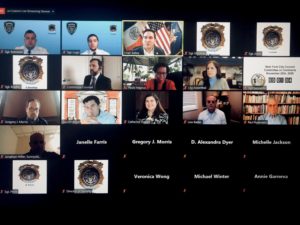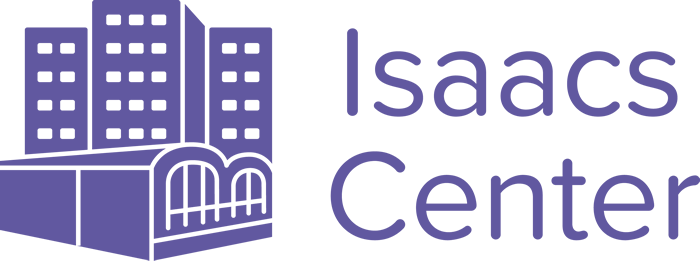
Gregory Morris, Executive Director, Stanley M. Isaacs Neighborhood Center – I would like to thank Chair Kallos for his support of the human services sector and for bringing much needed attention to this critical issue. I’m Gregory J. Morris and I’m the President and Executive Director of the Isaacs Center. The Isaacs Center is a multi-service organization providing services to all ages for nearly 60 years. We are a “hybrid model” Senior Center and NORC (Naturally Occurring Retirement Community) program located at the Isaacs Houses and Holmes Towers public housing developments on the Upper East Side, and the Taft Houses Senior Center in East Harlem. Since the start of the pandemic, our services to older adults have transitioned to virtual/online platforms, telephone reassurance, the launch of a community kitchen, and a commitment to meeting urgent needs – tablets and air conditioners, glasses and emergency meals. We operate an Education and Workforce Development program that provides young adults who are out-of-school and out-of-work (OSOW) with sector-specific job training, internships, employment placement, and retention support. Young adults were one of the groups hit hardest by the pandemic’s economic fallout. As many as 324,000 (34%) of 16 to 24-year-olds across New York City are out of school and out of work right now. Our out-of-school time programming seeks to mitigate the inequities in our education system by providing children who are underperforming in school – especially children who live in public housing – with daily enrichment, academic intervention, and social/emotional supports.![]()
In FY20, the City made a commitment to provide the human services providers with indirect rates that reflect their actual costs for FY20 through FY23. The City established the Indirect Cost Rate Initiative, which was funded at $53.4 million, for the purpose of raising indirect rates on the City’s human services contracts. The City then asked organizations to determine their actual indirect cost rate.(1) To produce this content, Isaacs Center engaged two accounting firms, to do the raw analysis and provide the required Independent Accountants’ Report. The final report certified an 18% indirect cost rate for our organization. The cost of engaging both firms was approximately $15,000.
Our Independent Accountants’ Report was submitted in May but every 2-3 weeks since, the City requested supplemental data to support the submission. On August 13th Isaacs Center received notification that our 18% indirect cost rate was approved by the City, and that our organization would receive amendments to our City contracts retroactively from FY20 through FY23 to reflect this increase. The FY21 Adopted Budget for the City (passed in June), however, cut $20 million in funding from its Indirect Cost Rate Initiative. The City implemented this cut by eliminating all providers who submitted their analysis after June 30th and providing only 60% of new funding to providers (like Isaacs Center) who submitted before the deadline and were approved. While the acceptance of the new rate at 18% being funded at 60% provides an additional $217K in funding, if the initiative had been fully funded, Isaacs Center would have received $362K in fiscal years FY20 through FY23. This difference of $145K is nearly 3% of value of our government contracts ($5,086,076), and yet, there is no expectation that we will do 3% less of what we are contractually mandated to do.
The reduction of indirect funding support at this time compromises our ability to execute on our identified programmatic objectives – at a time when our services provision is more essential than ever – and undermines our efforts to provide quality administrative functions and operations – at a time when our personnel – and the facilities in which they work – are being stretched beyond their traditional identified capacities in response to the pandemic. The City of New York Health and Human Services Cost Policies and Procedures Manual (2), which has been modified 5 times since it was first published in March 2019, provides instruction on how service providers like Isaacs Center should allocate their direct and indirect costs, and it is a useful reference when considering how indirect funding cuts have direct consequences:
•Maintenance and repair costs related to cleaning, repairing, refurbishing, and retrofitting offices used by general administrative personnel are indirect costs and reductions in indirect funding has challenged us to identify and utilize private funding resources to ensure that our key administrative personnel in Human Resources, Fiscal and Operations, IT, and even facilities access to both the environment and equipment necessary to perform each of their functions safely. (p.40)
•Insurance Costs are indirect costs and employer-based health insurance costs were grow annually by no less than 5% before COVID. Without additional indirect funding, Isaacs Center will be forced to either accept a plan with less robust premiums – there by compromising their personnel’s trust in their health benefits at a time when there are greater concerns about health than ever, or Isaacs Center will forced to increase the employee’s contribution to their health insurance plan. (p.32)
•CPA’s fee for conducting an examination of financial records, accounts, business transactions, accounting practices, and internal controls and issuing a report to the Provider expressing a professional opinion is consider an indirect cost (p.27). It is interesting to note that the Indirect Cost Rate Initiative analysis and the completion of the appropriate worksheets associated with this analysis required the involvement of a reputable CPA to create an acceptable application. The effort to produce our analysis cost Isaacs Center $15K.
•Materials and supply costs with organization-wide access and use are considered indirect costs. Reductions to funding for these purposes result in less access to equipment and resources as varied as office paper and copier supplies, toilet tissue, and PPE for all personnel. (p.41)
As has been reported, the primary driver of the human service sector’s financial distress is underfunded government payment rates which are 80 cents or less per dollar of true program delivery cost. At Isaacs Center, this means that we are seeking to secure more than $1M in financial support from private philanthropy, corporations, and individual donors to fulfill the obligations of our contracts. When Mayor de Blasio, Speaker Johnson and City Council announced the launch of the Indirect Funding Initiative to increase financial stability among Human Services providers in December 2019, organizations like ours began to plan for the possibility that the gap that has existed for so long between our payment rates and true program delivery costs would begin to close. Despite the successful implementation of the ICR Cost Manual and the new protocols established to facilitate government contracting as set forth in partnership between MOCS and the Non-Profit Resiliency Committee, the absence of the full commitment of the City related to indirect rates, and, the inability of the City to clarify what funding providers can expect in FY21, has completely underserved and undermined the sector at a time when our work and our workforce has never been more essential.
This has been a year of unbelievable challenges, and it is not over. But it has never been clearer the essential role that the human services sector plays in our communities. We ask for your strong support to advocate for the full restoration of this funding in the City’s next financial plan.
(1) We have historically received 10% for our indirect/administrative costs [executive salaries, fringe, facility costs etc.] on our City contracts, despite our actual indirect costs being much higher, similar to most other providers in the human services sector.
(2) https://www1.nyc.gov/assets/nonprofits/downloads/pdf/NYC%20HHS%20Cost%20Policies%20and%20Procedures%20Manual.pdf
